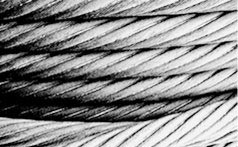When shopping for wire ropes, you quickly come to realize that there are many options on the market. Having choices is important, but at the same time, too many choices can lead to complicated decisions. Choosing the correct ropes for your specific application is essential for maintaining the highest levels of safety and productivity. A rope without enough strength will break during use, which stops business and creates very dangerous situations for employees. Some wire rope is best suited for traveling through outer space, whereas other types are used to hoist cranes. Because of the vast differences in use and environments, wire rope and rigging supply engineers are your best option for narrowing down choices.

Make sure you take time and care when considering the ropes that you will purchase and use.
Construction and stiffness of ropes are two vital considerations to make. Stiffness of ropes is such an important determining factor that technicians and engineers have developed multiple ways of measuring a rope’s stiffness. The two most common measurements include bending and axial stiffness.
Axial stiffness measurements are defined as the elastic deformation of a piece of wire under a load. Typically, the measurement is expressed as a ratio of deflection to load. It is important to note that the relationship between the two is not linear. Manufacturers only apply guideline values. Tightly wound wires with many strands, as a rule, experience significantly less axial gyration than weaker ropes.
Rigging Supplies
To choose correct wire ropes (verope) and rigging supplies for your project, you must take the time to consider all the essential factors.
Wire Rope